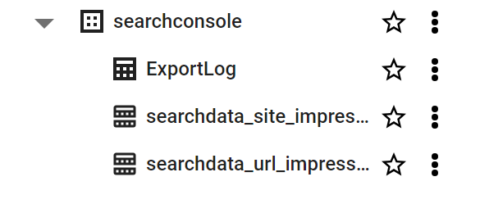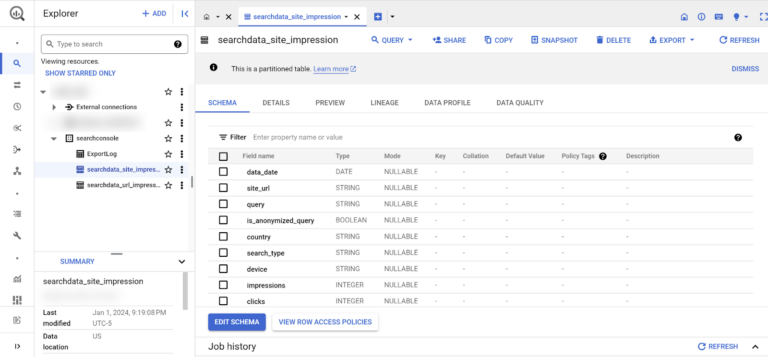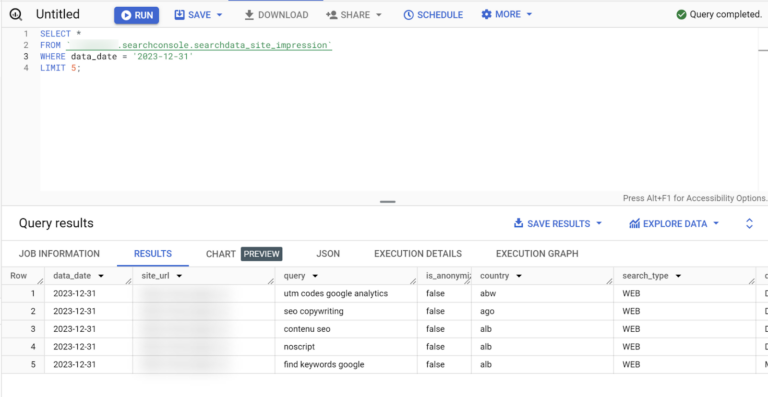Join us for this informative webinar, as link building expert Jon Ball will reveal the closely guarded secrets that have propelled Page One Power to become a highly successful $10 million agency.
Join us as we explore exclusive survey data from today’s top SEO professionals and digital marketers to inform your strategy this year.
Join us as we explore how to scale the very time-consuming and complicated process of earning links from digital PR, with proven case studies showing how you can earn hundreds of links in 30 days.
This strategy guide is the first step towards attracting high-quality leads and revolutionizing how you think about lead generation.
Join us for this informative webinar, as link building expert Jon Ball will reveal the closely guarded secrets that have propelled Page One Power to become a highly successful $10 million agency.
Join us for this informative webinar, as link building expert Jon Ball will reveal the closely guarded secrets that have propelled Page One Power to become a highly successful $10 million agency.
This SEO approach to BigQuery answers the question: What do I do once I connect BigQuery to Google Search Console? Let’s find out!
BigQuery has a number of advantages not found with other tools when it comes to analyzing large volumes of Google Search Console (GSC) data.
It lets you process billions of rows in seconds, enabling deep analysis across massive datasets.
This is a step up from Google Search Console, which only allows you to export 1,000 rows of data and may have data discrepancies.
You read all about why you should be using BigQuery as an SEO pro. You figured out how to plug GSC with BigQuery. Data is flowing!
Now what?
It’s time to start querying the data. Understanding and effectively querying the data is key to gaining actionable SEO insights.
In this article, we’ll walk through how you can get started with your queries.
Data is organized in tables. Each table corresponds to a specific Google Search Console report. The official documentation is very extensive and clear.
However, if you are reading this, it’s because you want to understand the context and the key elements before diving into it.
Taking the time to figure this out means that you will be able to create better queries more efficiently while keeping the costs down.
Schema is the blueprint that maps what each field (each piece of information) represents in a table.
You have three distinct schemas presented in the official documentation because each table doesn’t necessarily hold the same type of data. Think of tables as dedicated folders that organize specific types of information.
Each report is stored separately for clarity. You’ve got:
A few important notes on tables:
Fields are individual pieces of information, the specific type of data in a table. If this were an Excel file, we’d refer to fields as the columns in a spreadsheet.
If we’re talking about Google Analytics, fields are metrics and dimensions. Here are key data fields available in BigQuery when you import GSC data:
Let’s take the searchdata_site_impression table schema as an example. It contains 10 fields:
In BigQuery, the dataset for the Google Search Console (GSC) bulk export typically refers to the collection of tables that store the GSC data.
The dataset is named “searchconsole” by default.
Unlike the performance tab in GSC, you have to write queries to ask BigQuery to return data. To do that, you need to click on the “Run a query in BigQuery” button.
Once you do that, you should have access to the BigQuery Studio, where you will be creating your first SQL query. However, I don’t recommend you click on that button yet.
In Explorer, when you open your project, you will see the datasets; it’s a logo with squares with dots in them. This is where you see if you have GA4 and GSC data, for instance.
When you click on the tables, you get access to the schema. You can see the fields to confirm this is the table you want to query.
If you click on “QUERY” at the top of the interface, you can create your SQL query. This is better because it loads up some information you need for your query.
It will fill out the FROM with the proper table, establish a default limit, and the date that you can change if you need to.
Search Console > BigQuery export was previously only available to companies with devs/ a super techy SEO. Now it’s available to everyone!
Writing SQL is a more and more important skill for marketers & I’m making something to help with that – if you’d like to test it DM me 🙂 https://t.co/voOESJfo1e
— Robin Lord (@RobinLord8) February 21, 2023
The queries we are going to discuss here are simple, efficient, and low-cost.
Disclaimer: The previous statement depends on your specific situation.
Sadly, you cannot stay in the sandbox if you want to learn how to use BigQuery with GSC data. You must enter your billing details. If this has you freaked out, fear not; costs should be low.
In SQL, the ‘SELECT *’ statement is a powerful command used to retrieve all columns from a specified table or retrieve specific columns as per your specification.
This statement enables you to view the entire dataset or a subset based on your selection criteria.
A table comprises rows, each representing a unique record, and columns, storing different attributes of the data. Using “SELECT *,” you can examine all fields in a table without specifying each column individually.
For instance, to explore a Google Search Console table for a specific day, you might employ a query like:SELECT *FROM `yourdata.searchconsole.searchdata_site_impression`WHERE data_date = '2023-12-31'LIMIT 5;
You always need to make sure that the FROM clause specifies your searchdata_site_impression table. That’s why it is recommended to start by clicking the table first, as it automatically fills in the FROM clause with the right table.
Important: We limit the data we load by using the data_date field. It’s a good practice to limit costs (along with setting a limit).
If you want to see information for each URL on your site, you’d ask BigQuery to pull information from the ‘searchdata_url_impression’ table, selecting the ‘query’ and ‘clicks’ fields.
This is what the query would look like in the console:SELECT url, SUM(clicks) AS clicks, SUM(impressions)FROM `yourtable.searchdata_url_impression`WHERE data_date = ‘2023-12-25’GROUP BY urlORDER BY clicks DESCLIMIT 100
You always need to make sure that the FROM clause specifies your searchdata_url_impression table.
When you export GSC data into BigQuery, the export contains partition tables. The partition is the date.
This means that the data in BigQuery is structured in a way that allows for quick retrieval and analysis based on the date.
That’s why the date is automatically included in the query. However, you may have no data if you select the latest date, as the data may not have been exported yet.
In this example, we select the URL, clicks, and impressions fields for the 25th of December, 2023.
We group the results based on each URL with the sum of clicks and impressions for each of them.
Lastly, we order the results based on the number of clicks for each URL and limit the number of rows (URLs) to 100.
I recommend you read the GSC bulk data export guide. You should be using the export, so I will not be providing information about table optimization. That’s a tad bit more advanced than what we are covering here.
GSC’s performance tab shows one dimension at a time, limiting context. BigQuery allows you to combine multiple dimensions for better insights
Using SQL queries means you get a neat table. You don’t need to understand the ins and outs of SQL to make the best use of BigQuery.
This query is courtesy of Chris Green. You can find some of his SQL queries in Github.SELECT query, is_anonymized_query AS anonymized, SUM(impressions) AS impressions, SUM(clicks) AS clicks, SUM(clicks)/NULLIF(SUM(impressions), 0) AS CTRFROM yourtable.searchdata_site_impressionWHERE data_date >= DATE_SUB(CURRENT_DATE(), INTERVAL 28 DAY)GROUP BY query, anonymizedORDER BY clicks DESC
This query provides insights into the performance of user queries over the last 28 days, considering impressions, clicks, and CTR.
It also considers whether the queries are anonymized or not, and the results are sorted based on the total number of clicks in descending order.
This recreates the data you would normally find in the Search Console “Performance” report for the last 28 days of data, results by query, and differentiating anonymized queries.
Feel free to copy/paste your way to glory, but always make sure you update the FROM clause with the right table name. If you are curious to learn more about how this query was built, here is the breakdown:
According to Noah Learner, the Google Search Console API delivers 25 times more data than the GSC performance tab for the same search, providing a more comprehensive view.
In BigQuery, you can also access the information regarding anonymized queries.
It doesn’t omit the rows, which helps analysts get complete sums of impressions and clicks when you aggregate the data.
Understanding the volume of anonymized queries in your Google Search Console (GSC) data is key for SEO pros.
When Google anonymizes a query, it means the actual search query text is hidden in the data. This impacts your analysis:SELECT CASE WHEN query is NULL AND is_anonymized_query = TRUE THEN "no query" ELSE "query" END AS annonymized_query, count(is_anonymized_query) as query_countFROM `yourtable.searchdata_url_impression`GROUP BY annonymized_query
In this example, we use a CASE statement in order to verify for each row if the query is anonymized or not.
If so, we return “no query” in the query field; if not, “query.”
We then count the number of rows each query type has in the table and group the results based on each of them. Here’s what the result looks like:
BigQuery enables complex analysis you can’t pull off in the GSC interface. This means you can also create customized intel by surfacing patterns in user behavior.
You can analyze search trends, seasonality over time, and keyword optimization opportunities.
Here are some things you should be aware of to help you debug the filters you put in place:
Analyzing GSC data in BigQuery unlocks transformative SEO insights, enabling you to track search performance at scale.
By following the best practices outlined here for querying, optimizing, and troubleshooting, you can get the most out of this powerful dataset.
Reading this isn’t going to make you an expert instantly. This is the first step in your adventure!
If you want to know more, check out Jake Peterson’s blog post, start practicing for free with Robin Lord’s Lost at SQL game, or simply stay tuned because I have a few more articles coming!
If you have questions or queries, do not hesitate to let us know.
More resources:
Featured Image: Tee11/Shutterstock
Myriam Jessier is a consultant and trainer. They have more than 15 years of experience in the industry. They work …
Conquer your day with daily search marketing news.
Join Our Newsletter.
Get your daily dose of search know-how.
In a world ruled by algorithms, SEJ brings timely, relevant information for SEOs, marketers, and entrepreneurs to optimize and grow their businesses — and careers.
Copyright © 2024 Search Engine Journal. All rights reserved. Published by Alpha Brand Media.




